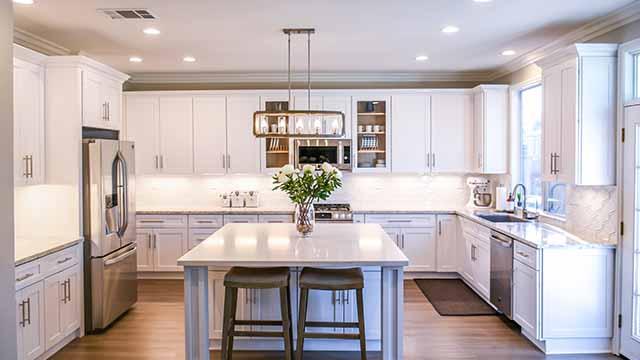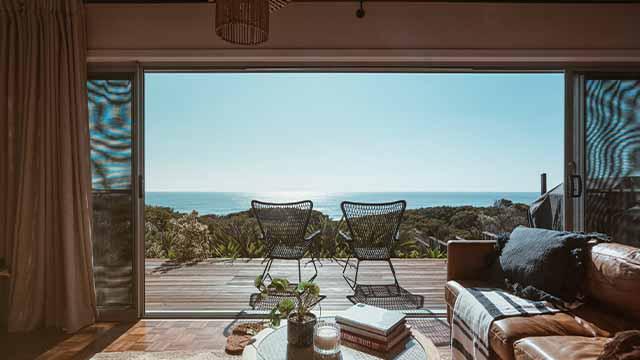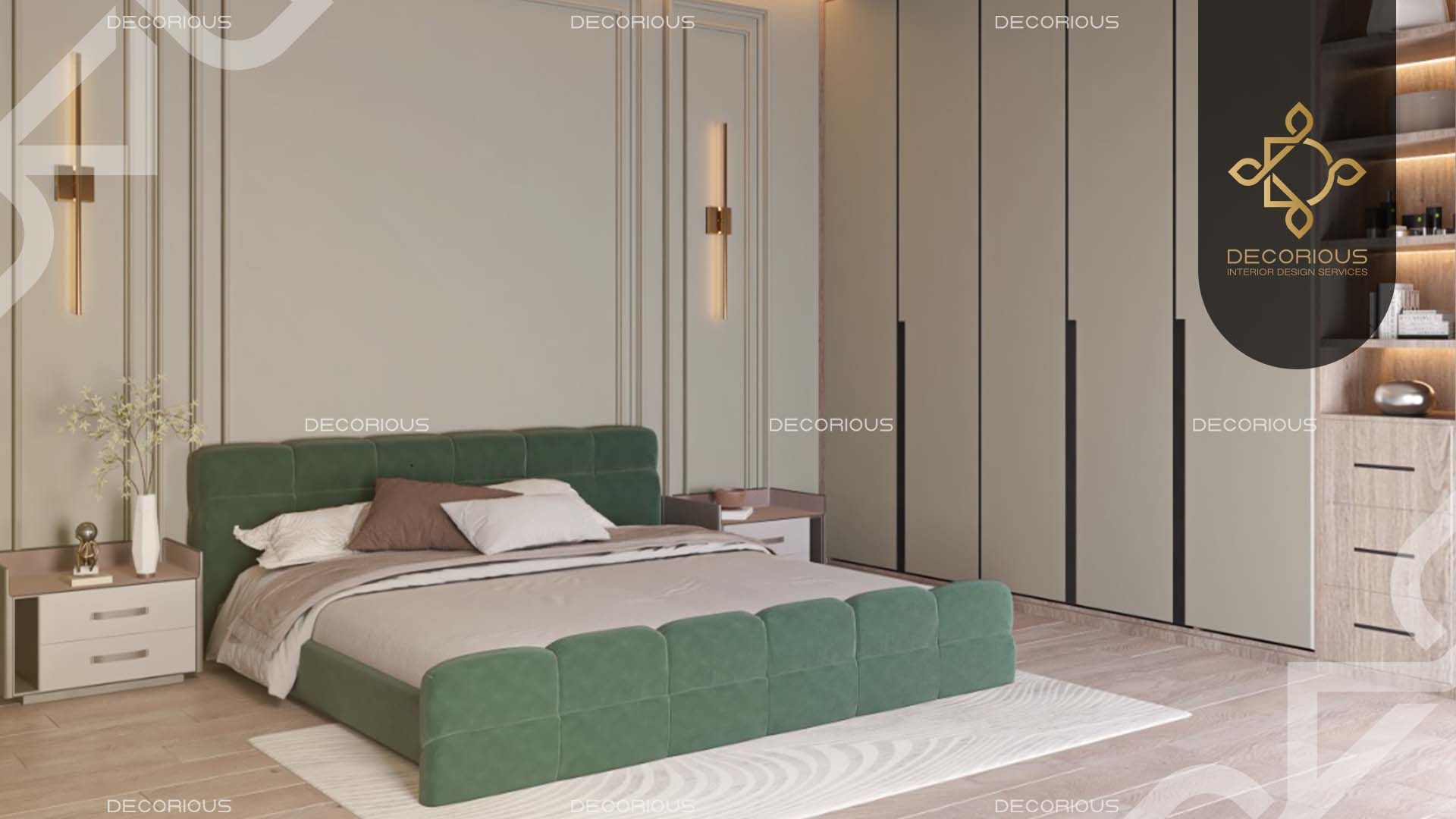
In interior design, emphasis is the purposeful development of focal points or prominent characteristics within a room to grab attention and establish a visual hierarchy. It is a potent technique that designers use to direct the viewer's focus and instill a certain feeling or story in a space. Emphasis gives an interior a feeling of drama, balance, and personality and transforms it from a simple collection of things into a coherent and enthralling visual experience by drawing attention to certain aspects, such as architectural details, furniture pieces, artworks, or even breathtaking views. So, in this article, we are going to talk about emphasis on interior design, keep reading.
Defining Emphasis in Interior Design

Emphasis in interior design definition refers to the purposeful development of focal points or imposing components that demand attention inside a room. It is accomplished by carefully choosing and arranging elements that stand out from the surrounding environment, such as architectural features, items, colors, or textures.
Designers can intentionally direct the viewer's gaze and establish a visual hierarchy that improves the overall aesthetic appeal and utility of the space by carefully accentuating elements, such as a statement piece of furniture, an architectural detail, or a vivid accent wall. Emphasis is a potent technique for evoking feelings, emphasizing crucial components, and generating drama or harmony within the composition of interior design.
Elements of Emphasis

- Bold, contrasting colors may grab people's attention and establish a focal point in a room. Bold accent walls or a piece of furniture in a striking color, for instance, might quickly become the room's focal point.
- Emphasis can be produced by objects or components that are bigger or smaller than their surroundings. Smaller decorative objects can subtly capture attention, but larger pieces of furniture or a statement light fixture can.
- It might be visually interesting and emphasize a point to use textures that are different from the nearby surfaces. For instance, a velvety rug, a textured wall covering, or textured upholstery on furniture may all serve as focal points in space.
- A space's features can be highlighted by strategically positioned lighting. Directed spotlights or ornamental pendant lights can highlight a specific element, such as a work of art or an interesting architectural aspect.
- A grand staircase, a fireplace, or an exposed beam are examples of built-in architectural features that may easily become focal points in a room. These elements may be made more noticeable by using lighting, contrasting colors, or positioning furniture and other accessories nearby. These types of emphasis in interior design are very important.
- An interior design might highlight interesting patterns or standout forms. For instance, a striking geometric wallpaper pattern or a piece of furniture with a sculptural design might quickly become the center of attention.
Establishing Focal Points

To generate visual appeal and focus attention, emphasis in interior design definition entails deliberately selecting and accentuating locations or features within a space. This may be done in some ways, including emphasizing architectural characteristics, arranging furniture in key locations, using size and proportion, and adding eye-catching decor or artwork. Designers may effectively create focus points that improve the overall beauty and usefulness of the interior design composition by carefully evaluating the purpose of the space and using eye-catching design strategies.
Ways to create emphasis in interior design
In interior design, the focus may be created in several methods that work well. One method is using color, where strong or contrasting shades may highlight objects or locations within a room.
Another technique is using scale and proportion to create focus points by using enormous or unusual furniture items. By combining diverse textural surfaces that stand out from the surrounding area, a texture may also be used to enhance focus. Strategic lighting arrangements can also draw attention to features or items. To add attention, you may also use beautiful patterns and forms and architectural aspects.
Last but not least, the positioning and arrangement of the furniture and other décor may direct the viewer's attention and create focal points within the design.
Balancing Emphasis with Harmony

Prioritizing focal points while making sure they flow in with the overall design concept is how you achieve harmony and Emphasis in Interior Design. To do this, it is necessary to develop a clear hierarchy, incorporate complementary components, maintain visual flow, balance visual weight, stick to a consistent style, and effectively use negative space. Designers may achieve a
harmonic balance that allows accented items to stand out while preserving a coherent and aesthetically pleasant setting by carefully taking these considerations into account.
The emphasis in Different Interior Spaces
Depending on each Emphasis in Interior Design features and purposes, it may be used in a variety of ways. To provide a meeting spot and add visual appeal, a media center, fireplace, or statement piece of furniture can serve as the focal point of a living room or entertainment space.
Focusing on the dining table and lighting fixture in a dining room may bring attention to the shared area and improve the dining experience. In
bedrooms, the focus might be on the bed. Decorative headboards, distinctive bedding, or an eye-catching wall treatment can provide a soothing focal point.
A useful but stylish office, an ergonomic chair, or customized decor may be used in home
offices or study spaces to increase efficiency and stimulate creativity. Every interior area offers the chance to identify and accentuate significant elements or places that specifically fulfill the function of the space, giving the overall design more depth and personality.
Impact of Emphasis on the Viewer

Focus on interior design has a significant effect on viewers, drawing their attention and influencing how they perceive a place. Designers may enhance comprehension of the space's purpose, create a visual hierarchy, generate emotions, express style, and raise visual impact by intentionally establishing focus points and stressing particular aspects. Emphasis influences how the viewer feels, reacts, and views the design as a whole. It molds their experience and leaves a lasting impression.
Different Types of Emphasis in Interior Design
The use of color, form, texture, pattern, lighting, size, and materials to make a visual impression and call attention to certain features are all examples of different sorts of emphasis in interior design. Designers may build focal points, add depth, and generate visual curiosity within a room by specifically combining lively colors, unusual forms, intriguing textures, eye-catching patterns, well-placed lighting, various sizes, and unique materials. Together, these various emphases improve the composition's visual appeal overall, direct the viewer's gaze, and elicit certain feelings or responses, creating a dynamic and interesting interior design composition.
a) Emphasis By Contrast
Using unexpected differences in color, texture, shape, or size to highlight components is a powerful interior design method known as emphasis by contrast. Designers may make a place physically powerful and call attention to regions or things by putting contrasting components together. An eye-catching contrast can be achieved by, for instance, combining a dark-colored piece of furniture with a light-colored wall or adding a textured accent wall among smooth surfaces. To create a sense of scale contrast, use enormous furniture in a space with low ceilings or add a tiny, complex accent to a larger, more simple background. Designers may give the overall design composition depth, visual appeal, and a feeling of drama by using emphasis through contrast.
b) Emphasis By Isolation

Emphasis through isolation is a technique used in interior design that entails focusing on and emphasizing certain features or items inside a room. An element or item may be made into a focal point by positioning it in a way that sets it apart from the background and draws the viewer's eyes to it. This may be accomplished in several ways, including by adding negative space surrounding the piece, using a backdrop or color that contrasts with it, or by physically isolating it by providing it with its own designated location. Designers can focus the viewer's gaze and increase the design's visual impact by isolating parts to give them a sense of importance and significance. You can easily find emphasis in interior design examples for that.
c) Emphasis By Placement

The goal of emphasis through placement is to direct attention to specific areas of a room by carefully placing objects, pieces of furniture, or architectural features. Designers can direct the viewer's gaze and draw attention to points of interest by positioning certain items in visible or useful places. This may be done in many ways, such as by placing a focal piece of furniture in the middle of the room, hanging art at eye level on a conspicuous wall, or situating seating such that it faces a specific architectural detail or picturesque vista. Emphasis on placement helps designers to control movement, create visual hierarchy, and improve the overall composition of a space, ensuring that important parts get the attention they require and resulting in a visually appealing and effective design.
FAQs
How can I determine the most suitable focal points to create emphasis in my space?
The function of the area, important architectural details, and items that naturally attract attention should all be taken into consideration when choosing the focal points for emphasis in your space. Try out various placements and arrangements to identify focus areas that are aesthetically pleasing and consistent with your design idea.
Can I incorporate multiple focal points within a single space without creating visual clutter?
Combining multiple attention points into a single area is doable without adding visual clutter. Establish a visual hierarchy, balance scale, and proportion, make use of negative space, make sure design pieces are positive, and place emphasis points in the right places to maintain balance.
How does the concept of emphasis apply to minimalist or modern interior design styles?
Modern or minimalist interior design approaches provide focus through the strategic positioning of key elements and the use of variety to establish points of emphasis within the room.
Are there any guidelines for balancing emphasis with other design elements in a space?
Consider establishing a simple order, transferring emphasis around the area, balancing visual weight, and maintaining harmony between highlighted pieces and the overarching design idea when attempting to balance emphasis with other design aspects in a room.
How can lighting be used to enhance emphasis in interior design?
By using accent lighting to draw attention to focal points, direct lighting to highlight specific elements, layered lighting techniques, contrast-creating lighting, and dimming controls to change the mood and intensity of the lighting, lighting can enhance emphasis in interior design.
Can emphasis be applied to small or limited spaces effectively?
Yes, it is possible to effectively apply attention to tiny or limited spaces by carefully choosing focal points, taking into account scale and proportion, putting them in strategic locations, applying reflecting surfaces, and stressing vertical aspects.
What are some common mistakes to avoid when incorporating emphasis in interior design?
The overemphasis on too many aspects, the imbalance between highlighted and non-emphasized parts, and the incoherence between the emphasized pieces and the overall design idea are some common mistakes to avoid when using an emphasis in interior design.
Why is emphasis important in interior design?
In interior design, emphasis is crucial because it draws the eye, creates a visual hierarchy, shows a purpose, heightens visual interest, and creates an emotional response, making the room more engaging and aesthetically pleasing. emphasis in interior design examples clearly shows that.
How do you stage a room using emphasis?
In interior design, emphasis is essential because it draws the eye, creates a visual hierarchy, shows a purpose, heightens visual interest, and creates an emotional response, making the room more engaging and aesthetically pleasing.
Conclusion
The emphasis in Interior Design focuses on a key idea that is crucial to producing aesthetically pleasing and harmonious settings. Emphasis creates visual focus, defines hierarchy, and conveys the function and personality of a place by intentionally emphasizing key areas and drawing attention to features. Accentuation provides depth, texture, and visual appeal to interior designs using strategies including contrast, positioning, lighting, and material choice. It improves the aesthetic appeal overall, directs the viewer's gaze, and elicits feelings or responses. Emphasis contributes to the creation of balance, harmony, and a feeling of purpose in interior design compositions, whether it is used in minimalist rooms or more expansive settings.
When the term 'Emphasis in Interior Design' attracts your interest, working with professional interior designers becomes a wise decision.
Decorious, a skilled interior design company, can exquisitely transform your living and working spaces.


 In interior design, emphasis is the purposeful development of focal points or prominent characteristics within a room to grab attention and establish a visual hierarchy. It is a potent technique that designers use to direct the viewer's focus and instill a certain feeling or story in a space. Emphasis gives an interior a feeling of drama, balance, and personality and transforms it from a simple collection of things into a coherent and enthralling visual experience by drawing attention to certain aspects, such as architectural details, furniture pieces, artworks, or even breathtaking views. So, in this article, we are going to talk about emphasis on interior design, keep reading.
In interior design, emphasis is the purposeful development of focal points or prominent characteristics within a room to grab attention and establish a visual hierarchy. It is a potent technique that designers use to direct the viewer's focus and instill a certain feeling or story in a space. Emphasis gives an interior a feeling of drama, balance, and personality and transforms it from a simple collection of things into a coherent and enthralling visual experience by drawing attention to certain aspects, such as architectural details, furniture pieces, artworks, or even breathtaking views. So, in this article, we are going to talk about emphasis on interior design, keep reading. 











